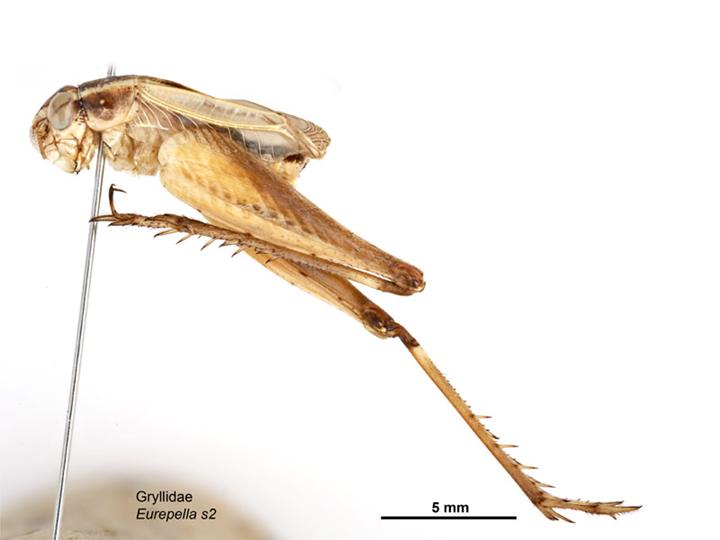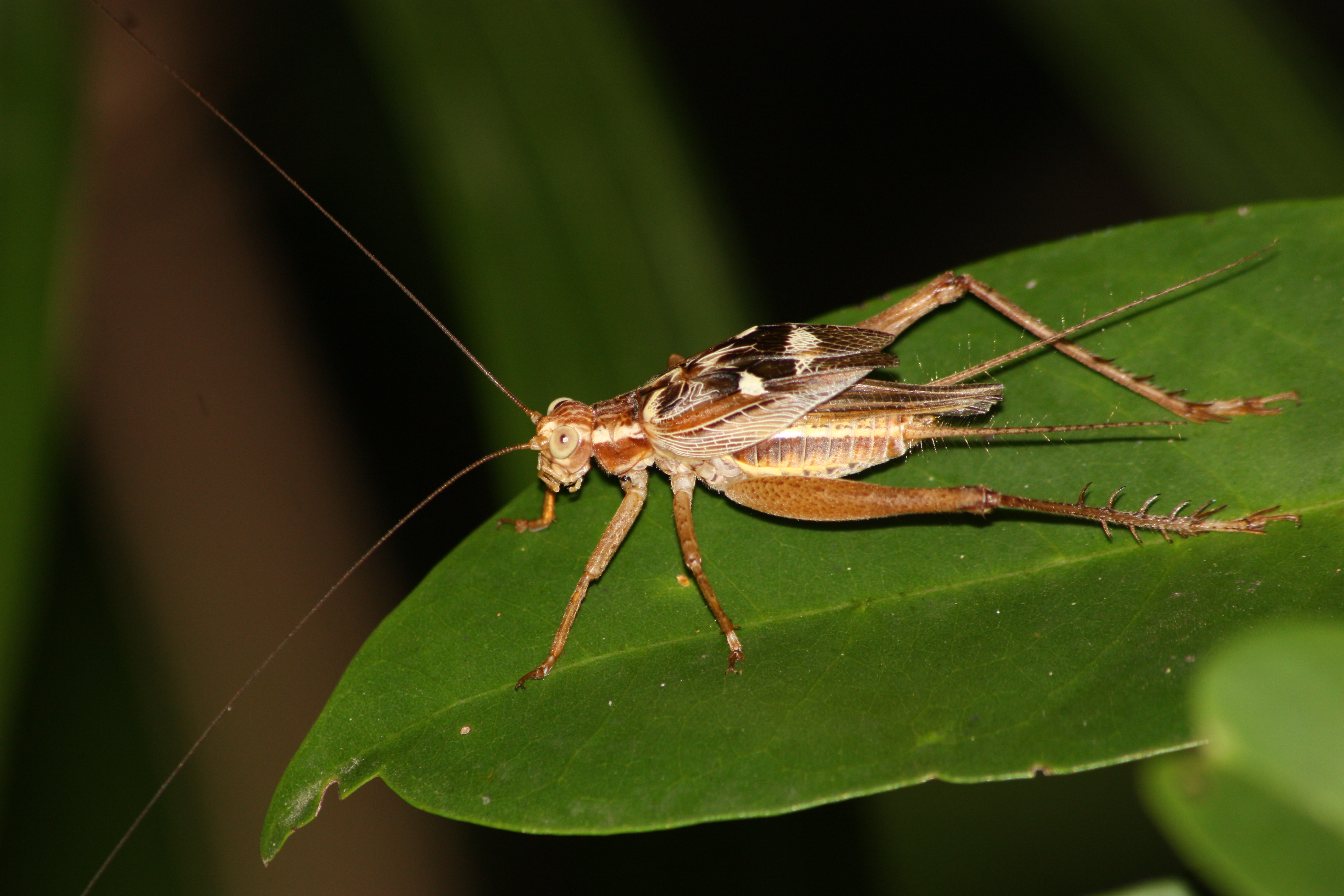Eneopterinae on:
[Wikipedia]
[Google]
[Amazon]
The Eneopterinae are a subfamily of
Orthoptera Species File (Version 5.0/5.0: retrieved 15 February 2019)
/ref> lists:
 Auth. Otte & Alexander, 1983 (mostly Australia, spp. of ''Eurepa'' from Thailand)
* genus group ''Eurepa'' Otte & Alexander, 1983
** '' Eurepa'' Walker, 1869
** '' Myara'' Otte & Alexander, 1983
* genus group ''Eurepella'' Otte & Alexander, 1983
** '' Arilpa'' Otte & Alexander, 1983
** '' Eurepella'' Otte & Alexander, 1983
** '' Salmanites'' Chopard, 1951 (synonym ''Napieria'' Baehr, 1989)
Auth. Otte & Alexander, 1983 (mostly Australia, spp. of ''Eurepa'' from Thailand)
* genus group ''Eurepa'' Otte & Alexander, 1983
** '' Eurepa'' Walker, 1869
** '' Myara'' Otte & Alexander, 1983
* genus group ''Eurepella'' Otte & Alexander, 1983
** '' Arilpa'' Otte & Alexander, 1983
** '' Eurepella'' Otte & Alexander, 1983
** '' Salmanites'' Chopard, 1951 (synonym ''Napieria'' Baehr, 1989)
 Auth. Robillard, 2004 (SE Asia, Australia, Pacific, S. America)
* '' Agnotecous'' Saussure, 1878
* '' Cardiodactylus'' Saussure, 1878
* '' Centuriarus'' Robillard, 2011
* '' Gnominthus'' Robillard & Vicente, 2015
* '' Julverninthus'' Robillard & Su, 2018
* '' Lebinthus'' Stål, 1877
* '' Ligypterus'' Saussure, 1878
* '' Macrobinthus'' Robillard & Dong, 2016
* '' Microbinthus'' Robillard & Dong, 2016
* '' Pixibinthus'' Robillard & Anso, 2016
* '' Ponca (insect)'' Hebard, 1928
* '' Swezwilderia'' Chopard, 1929
Auth. Robillard, 2004 (SE Asia, Australia, Pacific, S. America)
* '' Agnotecous'' Saussure, 1878
* '' Cardiodactylus'' Saussure, 1878
* '' Centuriarus'' Robillard, 2011
* '' Gnominthus'' Robillard & Vicente, 2015
* '' Julverninthus'' Robillard & Su, 2018
* '' Lebinthus'' Stål, 1877
* '' Ligypterus'' Saussure, 1878
* '' Macrobinthus'' Robillard & Dong, 2016
* '' Microbinthus'' Robillard & Dong, 2016
* '' Pixibinthus'' Robillard & Anso, 2016
* '' Ponca (insect)'' Hebard, 1928
* '' Swezwilderia'' Chopard, 1929
crickets
Crickets are orthopteran insects which are related to bush crickets and more distantly, to grasshoppers. In older literature, such as Imms,Imms AD, rev. Richards OW & Davies RG (1970) ''A General Textbook of Entomology'' 9th Ed. Methuen 886 ...
, in the family Gryllidae, based on the type genus '' Eneoptera''. It is one of several groups widely described as "true crickets", but this subfamily may also referred to in American English as "bush crickets". Of the more than 500 species that make up this subfamily, most occur in moist, tropical
The tropics are the regions of Earth surrounding the equator, where the sun may shine directly overhead. This contrasts with the temperate or polar regions of Earth, where the Sun can never be directly overhead. This is because of Earth's ax ...
habitats. These insects are medium to large and brown or gray in color. They eat plant leaves, flowers, and fruits and can occasionally cause economic damage. Their eggs are deposited in pith
Pith, or medulla, is a tissue in the stems of vascular plants. Pith is composed of soft, spongy parenchyma cells, which in some cases can store starch. In eudicotyledons, pith is located in the center of the stem. In monocotyledons, it ex ...
, bark, or wood. Eneopterinae show a great diversity in stridulatory apparatus, signals emitted, and associated behaviour.
Tribes and Genera
Eneopterinae currently consists of sixtribes
The term tribe is used in many different contexts to refer to a category of human social group. The predominant worldwide use of the term in English is in the discipline of anthropology. The definition is contested, in part due to conflict ...
and the ''Orthoptera Species File''/ref> lists:
Eneopterini
Auth. Saussure, 1874 (South America) * '' Eneoptera'' Burmeister, 1838Eurepini
 Auth. Otte & Alexander, 1983 (mostly Australia, spp. of ''Eurepa'' from Thailand)
* genus group ''Eurepa'' Otte & Alexander, 1983
** '' Eurepa'' Walker, 1869
** '' Myara'' Otte & Alexander, 1983
* genus group ''Eurepella'' Otte & Alexander, 1983
** '' Arilpa'' Otte & Alexander, 1983
** '' Eurepella'' Otte & Alexander, 1983
** '' Salmanites'' Chopard, 1951 (synonym ''Napieria'' Baehr, 1989)
Auth. Otte & Alexander, 1983 (mostly Australia, spp. of ''Eurepa'' from Thailand)
* genus group ''Eurepa'' Otte & Alexander, 1983
** '' Eurepa'' Walker, 1869
** '' Myara'' Otte & Alexander, 1983
* genus group ''Eurepella'' Otte & Alexander, 1983
** '' Arilpa'' Otte & Alexander, 1983
** '' Eurepella'' Otte & Alexander, 1983
** '' Salmanites'' Chopard, 1951 (synonym ''Napieria'' Baehr, 1989)Hemigryllini
Auth. Gorochov, 1986 (South America) * '' Hemigryllus'' Saussure, 1877Lebinthini
 Auth. Robillard, 2004 (SE Asia, Australia, Pacific, S. America)
* '' Agnotecous'' Saussure, 1878
* '' Cardiodactylus'' Saussure, 1878
* '' Centuriarus'' Robillard, 2011
* '' Gnominthus'' Robillard & Vicente, 2015
* '' Julverninthus'' Robillard & Su, 2018
* '' Lebinthus'' Stål, 1877
* '' Ligypterus'' Saussure, 1878
* '' Macrobinthus'' Robillard & Dong, 2016
* '' Microbinthus'' Robillard & Dong, 2016
* '' Pixibinthus'' Robillard & Anso, 2016
* '' Ponca (insect)'' Hebard, 1928
* '' Swezwilderia'' Chopard, 1929
Auth. Robillard, 2004 (SE Asia, Australia, Pacific, S. America)
* '' Agnotecous'' Saussure, 1878
* '' Cardiodactylus'' Saussure, 1878
* '' Centuriarus'' Robillard, 2011
* '' Gnominthus'' Robillard & Vicente, 2015
* '' Julverninthus'' Robillard & Su, 2018
* '' Lebinthus'' Stål, 1877
* '' Ligypterus'' Saussure, 1878
* '' Macrobinthus'' Robillard & Dong, 2016
* '' Microbinthus'' Robillard & Dong, 2016
* '' Pixibinthus'' Robillard & Anso, 2016
* '' Ponca (insect)'' Hebard, 1928
* '' Swezwilderia'' Chopard, 1929Nisitrini
Auth. Robillard, 2004 (Malesia, New Guinea) * '' Nisitrus'' Saussure, 1878 * '' Paranisitra'' Chopard, 1925Xenogryllini
Auth. Robillard, 2004 (Central-southern Africa, Asia) * '' Pseudolebinthus'' Robillard, 2006 * '' Xenogryllus'' Bolívar, 1890''
incertae sedis
or is a term used for a taxonomy (biology), taxonomic group where its broader relationships are unknown or undefined. Alternatively, such groups are frequently referred to as "enigmatic taxa". In the system of open nomenclature, uncertainty ...
''
* '' Adenophallusia'' – monotypic – ''A. naiguatana'' de Mello & de Camargo e Mello, 1996
* †'' Brontogryllus'' – monotypic – ''B. excelsus'' Martins-Neto, 1991
* '' Jabulania'' – monotypic – ''J. clancularia'' Otte & Perez-Gelabert, 2009
* †'' Proecanthus'' – monotypic – ''P. anatolicus'' Sharov, 1968
References
External links
* * {{Taxonbar, from=Q989660 Crickets Orthoptera subfamilies